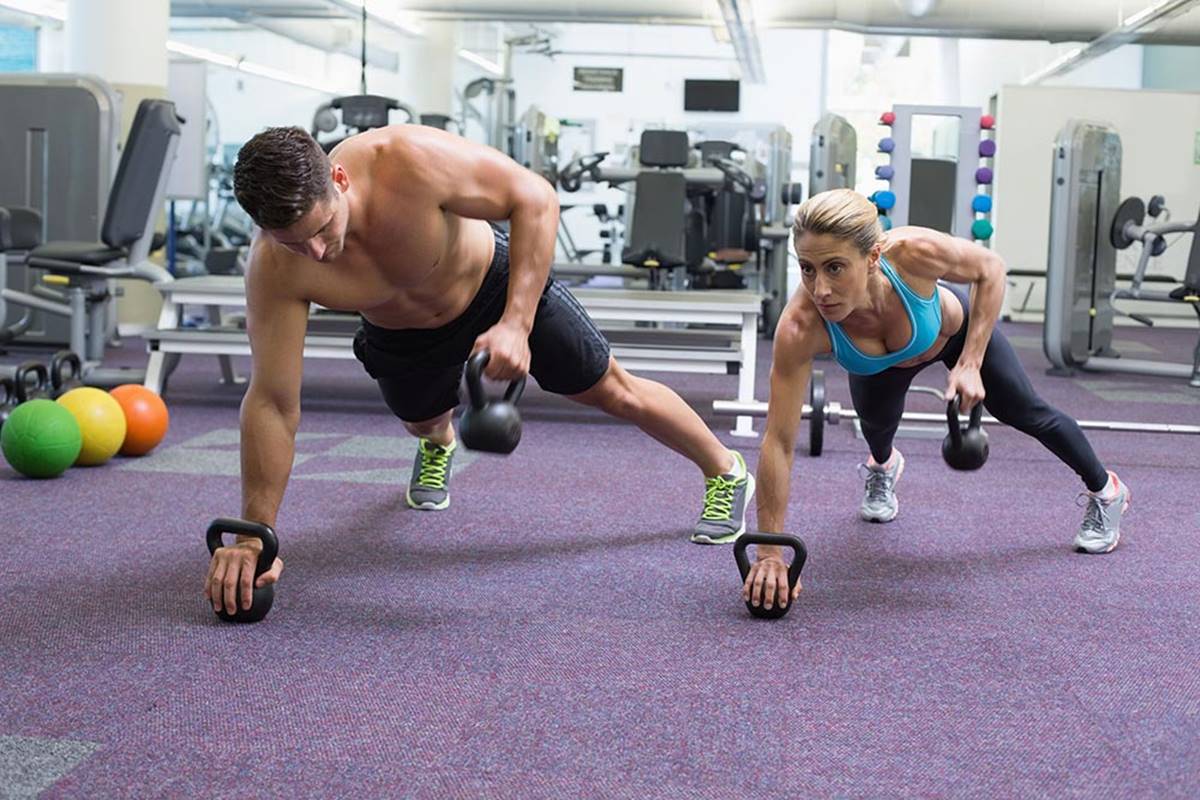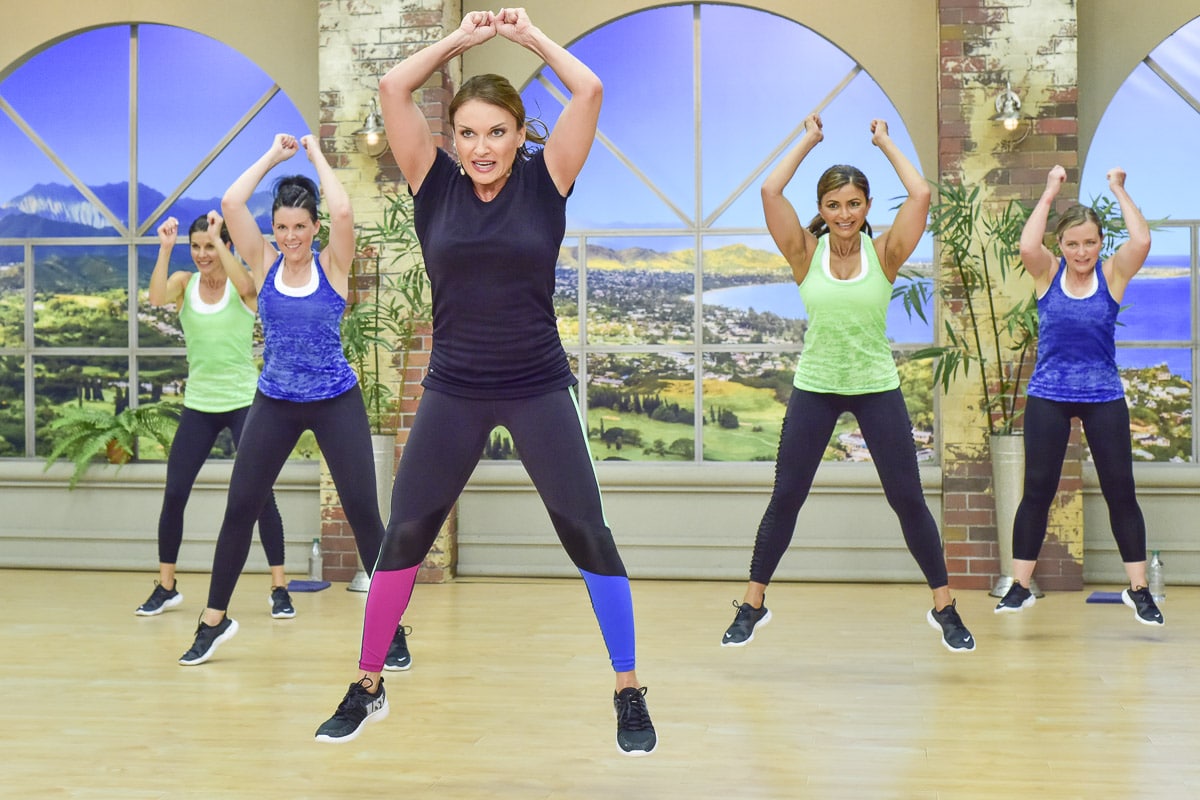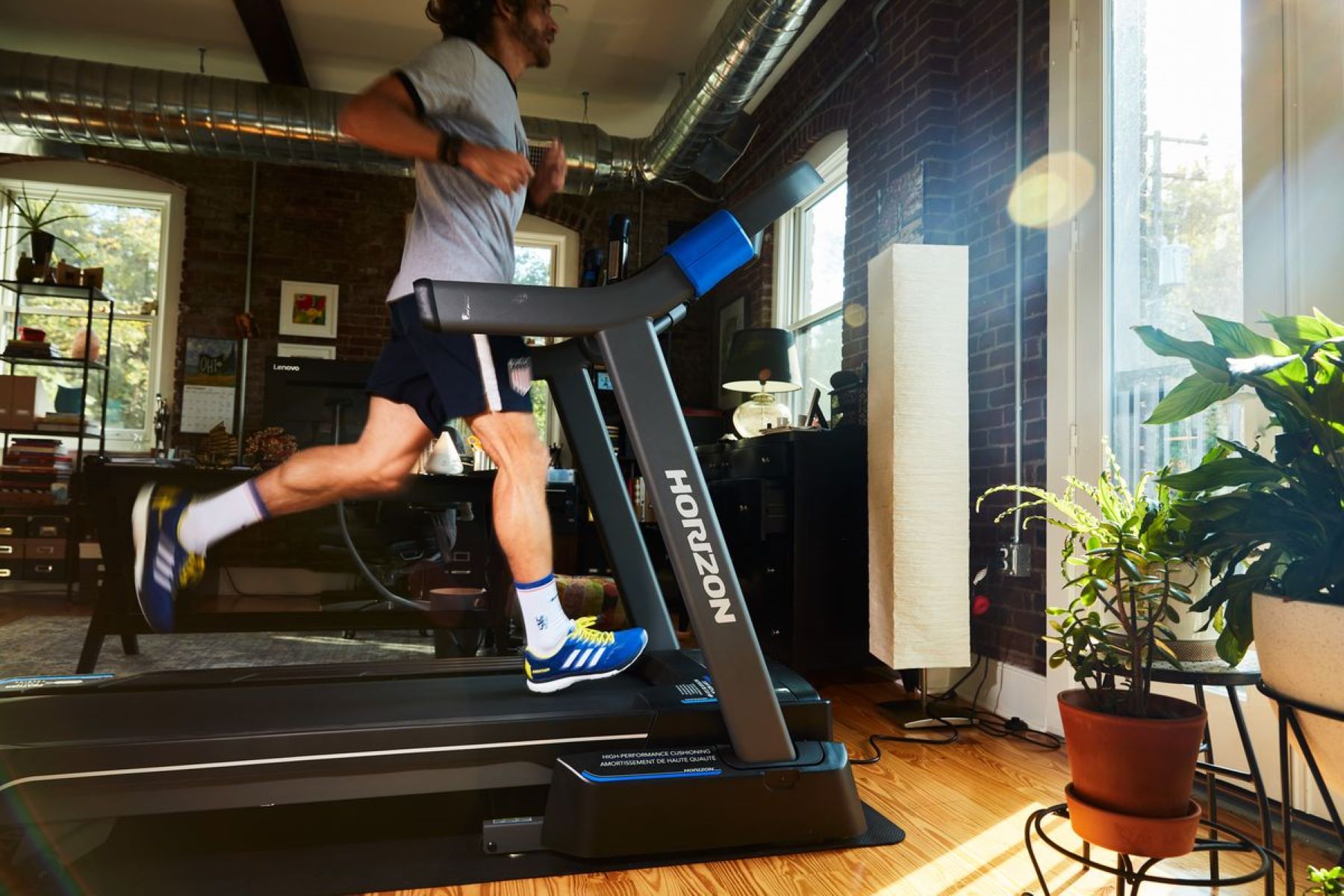Home>Misc>Featured>What Training Intensity Is Required During The Working Rounds In High Intensity Interval Training


Featured
What Training Intensity Is Required During The Working Rounds In High Intensity Interval Training
Modified: January 2, 2024
Discover the optimal training intensity for high-intensity interval training during working rounds. Featured article providing insights and recommendations for an effective workout routine.
Introduction
Welcome to the world of High Intensity Interval Training (HIIT), where workouts are intense, efficient, and effective. HIIT has gained popularity in recent years as a time-saving and results-driven exercise technique. Whether you are a seasoned athlete or just starting your fitness journey, understanding the importance of training intensity during the working rounds of HIIT is crucial to maximizing the benefits of this training method.
HIIT involves alternating periods of high-intensity exercise with short periods of rest or active recovery. This unique approach not only challenges your cardiovascular system but also helps increase your metabolism and burn calories long after your workout is finished. While the duration and structure of HIIT sessions may vary, one key aspect that remains constant is the intensity at which you perform each working round.
Training intensity refers to the level of effort and exertion you put into each interval of high-intensity exercise during your HIIT workout. It is essentially the key ingredient that makes HIIT so effective. By pushing your body to work at a high intensity, you engage your aerobic and anaerobic systems, promoting cardiovascular fitness, muscular strength, and endurance.
Understanding how to achieve and maintain the required training intensity during the working rounds of your HIIT sessions is essential for achieving optimal results. Various factors can affect training intensity, such as the exercise selection, duration of the working round, rest periods, and your overall fitness level. Therefore, it is important to be mindful of these factors and make adjustments accordingly to ensure you are giving your best effort during each interval.
This article will delve deeper into the significance of training intensity in HIIT, explore the factors that impact it, and provide strategies for achieving and maintaining the required intensity level. By the end of this article, you will have a better understanding of how to optimize your HIIT workouts and achieve your fitness goals more efficiently.
Definition of High Intensity Interval Training
High Intensity Interval Training (HIIT) is a form of cardiovascular exercise that involves alternating periods of high-intensity exercise and short rest periods or active recovery. Unlike traditional steady-state cardio workouts that involve maintaining a consistent pace, HIIT workouts are characterized by quick bursts of intense effort followed by brief periods of rest.
The intensity of the exercises in HIIT is what sets it apart from other training methods. During the high-intensity intervals, you should aim to give your maximum effort, pushing your heart rate to its upper limits. These bursts of high-intensity work are usually performed for 20-60 seconds, depending on your fitness level and the specific workout protocol. Following each intense interval, you then have a short recovery period, typically lasting 10-30 seconds, before moving on to the next round.
HIIT workouts can be structured in various ways, including circuit-style workouts, treadmill sprints, cycling intervals, or bodyweight exercises. The exercise selection is diverse and can be customized based on your preferences and fitness goals.
One of the main benefits of HIIT is its efficiency. Traditional cardio workouts can take up to an hour to complete, while a HIIT session typically lasts anywhere from 10 to 30 minutes. Despite the shorter duration, HIIT has been shown to be more effective in burning calories and improving cardiovascular fitness.
Research has found that HIIT can increase your metabolic rate and promote fat loss by stimulating excess post-exercise oxygen consumption (EPOC). This means that even after your workout is finished, your body continues to burn calories at an elevated rate for several hours. Additionally, HIIT has been shown to improve aerobic and anaerobic fitness, increase muscle endurance, and enhance insulin sensitivity.
It is important to note that while HIIT can produce significant fitness gains, it is also a demanding form of exercise. The high-intensity nature of the workouts places considerable stress on your body. As such, it is crucial to approach HIIT with caution and gradually build up your fitness level before diving into intense workouts.
Now that we have defined HIIT and explored how it differs from other types of training, let’s dive deeper into the importance of training intensity during HIIT workouts and how it can impact your overall fitness progress.
The Importance of Training Intensity in High Intensity Interval Training
When it comes to High Intensity Interval Training (HIIT), training intensity is the key factor that drives significant improvements in cardiovascular fitness, metabolic rate, and overall performance. The intensity at which you perform each working round during a HIIT session determines the physiological adaptations that occur in your body.
By pushing your body to its limits and working at a high intensity, you engage both your aerobic and anaerobic energy systems. This combination challenges your cardiovascular system, increases your lung capacity, and improves your body’s ability to efficiently utilize oxygen. As a result, HIIT can lead to significant improvements in your cardiovascular fitness and endurance.
Furthermore, the high-intensity intervals in a HIIT workout trigger a response known as EPOC (Excess Post-exercise Oxygen Consumption), also known as the “afterburn effect.” This means that even after your workout is complete, your body continues to burn calories at an elevated rate for a period of time. The higher the training intensity during the working rounds, the greater the magnitude of the EPOC effect, resulting in increased calorie burn and potentially a greater fat loss.
In addition to improving cardiovascular fitness and promoting fat loss, training at a high intensity during HIIT can also lead to muscular adaptations. The intense bursts of exercise stimulate muscle fibers and promote muscular strength and endurance. This helps to shape and tone your muscles, improving overall body composition.
Another benefit of training at a high intensity in HIIT is the time efficiency it offers. HIIT workouts typically have shorter durations compared to traditional steady-state cardio workouts, yet they deliver comparable or even superior results. This makes HIIT a time-saving strategy for those with busy schedules who still want to prioritize their fitness.
However, it is essential to strike a balance when it comes to training intensity. Going all out at maximum intensity during every interval can lead to burnout, increased risk of injury, and hinder your progress. It is important to listen to your body, progress gradually, and find a suitable level of intensity that challenges you without pushing you beyond your limits.
Moreover, training intensity is not a one-size-fits-all approach. It varies from person to person, depending on factors such as fitness level, age, and overall health. It is crucial to assess and evaluate your fitness level and adjust the intensity of your workouts accordingly. This ensures that you are consistently challenging yourself and making progress towards your fitness goals.
In summary, training intensity plays a vital role in High Intensity Interval Training (HIIT). It determines the physiological changes that occur in your body, including improvements in cardiovascular fitness, calorie burn, and muscular strength. By finding the right balance of intensity, you can optimize your HIIT workouts and achieve maximum benefits in less time. Now that we understand the importance of training intensity, let’s explore the factors that can affect it during the working rounds of HIIT.
Factors Affecting Training Intensity during the Working Rounds
Several factors can influence the training intensity during the working rounds of High Intensity Interval Training (HIIT). Understanding these factors and how they impact your ability to maintain a high level of intensity is essential for optimizing your workouts. Let’s explore some of the key factors that can affect training intensity in HIIT.
- Exercise Selection: The type of exercise you choose for your HIIT workout plays a significant role in determining the training intensity. Different exercises require varying levels of effort and engage different muscle groups. For example, exercises like burpees, squat jumps, or sprints can elicit a higher level of intensity compared to exercises like walking lunges or step-ups. Selecting exercises that challenge your cardiovascular system and target multiple muscle groups can help you achieve a greater training intensity.
- Work-to-Rest Ratio: The ratio of work time to rest time during a HIIT session influences your ability to sustain high intensity. A shorter rest period between working rounds forces your body to recover quickly and maintain a higher level of intensity throughout the workout. On the other hand, a longer rest period allows for more recovery, enabling you to exert maximum effort during each working round. Experimenting with different work-to-rest ratios can help you find the optimal balance that challenges you without causing excessive fatigue.
- Duration of the Working Rounds: The length of time you perform each high-intensity interval can impact training intensity. As a general guideline, shorter intervals of 20-30 seconds are often performed at a higher intensity compared to longer intervals of 45-60 seconds. However, the level of intensity also depends on your fitness level and the specific exercise. Finding the right duration that allows you to sustain a challenging intensity without sacrificing form or performance is crucial.
- Overall Fitness Level: Your current level of fitness plays a role in determining the training intensity during HIIT. As you become more conditioned, what was once considered high intensity may become easier for you. It is important to continually challenge yourself by increasing the level of difficulty in your workouts to maintain a high training intensity. Incorporating progressions, such as adding resistance, increasing speed, or varying the complexity of movements, can help you continue to push your limits.
- Mental Focus and Mindset: The mental aspect of training intensity should not be overlooked. Your mindset and level of focus during your HIIT workouts can greatly influence your ability to exert maximum effort. Maintaining a positive mindset and staying engaged with the workout can help you push through fatigue and stay committed to maintaining a high level of intensity.
While these factors can impact training intensity in HIIT, it’s important to remember that the optimal level of intensity will vary from person to person. It is crucial to listen to your body and make adjustments as necessary to ensure you are challenging yourself without compromising safety and technique.
Now that we understand the factors that affect training intensity during the working rounds of HIIT, let’s explore how to determine the optimal training intensity for maximum benefits.
Determining the Optimal Training Intensity for Maximum Benefits
When it comes to High Intensity Interval Training (HIIT), finding the optimal training intensity is crucial for maximizing the benefits of your workouts. While there is no one-size-fits-all approach to determining the perfect intensity, there are several methods and guidelines you can follow to help you find the right balance. Let’s explore how to determine the optimal training intensity for maximum benefits in your HIIT sessions.
1. Rate of Perceived Exertion (RPE): One method to gauge the intensity of your HIIT workout is by using the Rate of Perceived Exertion scale. RPE is a subjective rating of how hard you feel you are working during exercise. It ranges from 0 to 10, with 0 being no exertion at all and 10 being maximum effort. Aim to work at an RPE of 7 or 8 during your high-intensity intervals, where you feel you are pushing your limits but still able to maintain proper form and technique.
2. Heart Rate Monitoring: Utilizing a heart rate monitor can provide objective data on your training intensity. Calculate your maximum heart rate by subtracting your age from 220. During the high-intensity intervals, aim to reach 80-90% of your maximum heart rate. However, it’s important to note that individual variations exist, and factors such as fitness level and medication can affect heart rate response. Consult with a healthcare professional or exercise specialist for personalized guidance.
3. Talk Test: The talk test is a simple way to assess your training intensity. During the high-intensity intervals, you should be able to speak a few words but not hold a full conversation. If you can speak comfortably without any effort, you may need to increase the intensity. Conversely, if you are unable to speak more than a word or two, you may be pushing too hard and may need to scale back slightly.
4. Performance and Progression: Pay attention to your performance and progression in your HIIT workouts. If you find that you are easily completing the intervals without feeling challenged, it may be time to increase the intensity. This can be done by increasing the resistance, speed, or duration of your high-intensity intervals. On the other hand, if you are struggling to maintain the intensity or experiencing excessive fatigue, it may be necessary to reduce the intensity temporarily and gradually build back up.
It’s important to remember that the optimal training intensity for maximum benefits will vary from person to person. Factors such as age, fitness level, and health condition must be taken into account. It’s always advisable to consult with a qualified fitness professional to develop a personalized training plan that suits your specific needs and goals.
By assessing and fine-tuning the training intensity in your HIIT workouts, you can ensure that you are consistently challenging your body, promoting progress, and reaping the maximum benefits of this highly effective training method.
Now that we have explored how to determine the optimal training intensity, let’s delve into strategies for monitoring and maintaining the required training intensity during your HIIT sessions.
Monitoring Training Intensity During High Intensity Interval Training
Monitoring the training intensity during High Intensity Interval Training (HIIT) is essential to ensure that you are pushing yourself to the appropriate level and reaping the full benefits of your workouts. By keeping track of your intensity, you can make necessary adjustments and maintain a consistent level of effort throughout your HIIT sessions. Let’s explore some effective strategies for monitoring training intensity during HIIT.
1. Use a Heart Rate Monitor: A heart rate monitor is a valuable tool for tracking your heart rate during exercise. By wearing a heart rate monitor, you can monitor your heart rate in real-time and ensure that you are hitting the desired intensity zone. Aim to maintain your heart rate within 80-90% of your maximum heart rate during the high-intensity intervals. This can help you gauge your effort level and make adjustments as needed.
2. Use Perceived Exertion Scales: Rate of Perceived Exertion (RPE) scales provide a subjective measure of your effort level during exercise. A common scale ranges from 0-10, with 0 being no exertion and 10 being maximal effort. By periodically assessing your RPE during high-intensity intervals, you can get a sense of how hard you are working and adjust your intensity accordingly.
3. Monitor Breathing and Ability to Speak: Pay attention to your breathing rate and ability to speak during the high-intensity intervals. If you are gasping for breath and unable to speak more than a word or two, it may indicate that you are pushing too hard. On the other hand, if you can carry on a conversation without any difficulty, you may need to increase the intensity. Strive for a level where you are working hard and challenging yourself but still able to speak a few words.
4. Track Performance Metrics: Keeping track of performance metrics such as speed, distance, or repetitions can help you monitor your training intensity. By recording your performance in each high-intensity interval, you can track your progress over time and make adjustments to maintain or increase the level of intensity. Regularly assess your performance and set goals to ensure continued progress in your HIIT workouts.
5. Use Visual Cues: Another way to monitor training intensity is by using visual cues. For example, if you are performing sprints, aim to maintain a fast pace while keeping good form and technique. If you start to notice a significant drop in speed or form, it may indicate that you are fatiguing and need to reduce the intensity or take a short rest. Pay attention to your body’s signals and adjust accordingly.
Remember, the goal is to find the optimal balance between challenging yourself and avoiding overexertion. Monitoring training intensity during HIIT allows you to gauge your effort level, make adjustments as needed, and ensure that you are consistently working at an appropriate intensity to achieve your fitness goals.
Now that we have explored various strategies for monitoring training intensity during HIIT, let’s discuss strategies to help you achieve and maintain the required training intensity.
Strategies to Achieve and Maintain the Required Training Intensity
Achieving and maintaining the required training intensity during High Intensity Interval Training (HIIT) is crucial for maximizing the benefits of your workouts. Consistently working at the appropriate intensity level ensures that you are challenging your body and pushing yourself to achieve optimal results. Let’s explore some strategies that can help you achieve and maintain the required training intensity during your HIIT sessions.
1. Set Clear Goals: Before starting your HIIT workout, establish clear goals for yourself. Having a specific target in mind can help you stay motivated and focused during your high-intensity intervals. Whether it is increasing the number of repetitions, improving your speed, or achieving a certain level of perceived exertion, having a goal can provide a benchmark to strive towards and keep you accountable.
2. Warm-Up Effectively: A proper warm-up is essential to prepare your body for the intense workout ahead. Start your HIIT session with a dynamic warm-up routine that includes movements that mimic the exercises in your workout. This helps increase blood flow to the muscles, raises body temperature, and mentally prepares you for the upcoming intensity. A well-executed warm-up can enhance your overall performance and enable you to work at a higher intensity.
3. Stay Focused and Mindful: During your high-intensity intervals, it is important to stay focused and present. Pay attention to your form, breathing, and effort level. Mindfully engage the muscles involved in each exercise and maintain proper technique throughout. By staying mentally engaged, you can ensure that you are working at the required intensity and maximizing the benefits of your workout.
4. Use Interval Timers or Apps: Interval timers or smartphone apps can be valuable tools for maintaining the required training intensity during HIIT. These tools allow you to set specific work and rest intervals, ensuring that you adhere to the desired timing and intensity. Hearing the timer cue you to shift from work to rest or vice versa can help you maintain the appropriate level of effort without having to constantly check the clock.
5. Progress Gradually: Gradually increasing the intensity of your HIIT workouts over time is key to challenging your body and making progress. Incorporate progressions such as increasing the duration of the high-intensity intervals, reducing rest time, or adding resistance to your exercises. By gradually pushing your limits, you can maintain the required training intensity and continue to see improvements in your fitness and performance.
6. Prioritize Recovery: Giving your body adequate time to recover between HIIT sessions is essential for maintaining the required training intensity. Overtraining can lead to decreased intensity, increased risk of injury, and burnout. Make sure to incorporate rest days into your training schedule and prioritize proper sleep, nutrition, and hydration. Taking care of your body and allowing it to recover fully will help you maintain a higher level of intensity during your workouts.
7. Listen to Your Body: Lastly, it is crucial to listen to your body and adjust the intensity as needed. Push yourself to the appropriate level of challenge, but also recognize when you need to scale back or take a brief rest. Pay attention to any signs of pain or discomfort, as pushing through could lead to injury. Remember that training intensity is individualized, and it’s important to find the right balance that works for you.
By applying these strategies, you can effectively achieve and maintain the required training intensity during your HIIT workouts. Consistency, effort, and mindful training will ultimately lead to optimal results and progress towards your fitness goals.
Now that we have explored strategies to achieve and maintain the required training intensity, let’s summarize the key points we have covered in this article.
Conclusion
High Intensity Interval Training (HIIT) is a dynamic and effective exercise method that offers numerous benefits for cardiovascular fitness, calorie burn, and muscular strength. Training intensity is a critical component of HIIT, influencing the physiological adaptations and improvements that occur in your body.
Understanding how to achieve and maintain the required training intensity during the working rounds of HIIT is essential for maximizing the benefits of this training method. Factors such as exercise selection, work-to-rest ratios, duration of intervals, and overall fitness level can impact training intensity. Carefully monitoring and adjusting your intensity using methods like heart rate monitoring, perceived exertion scales, and performance tracking can help optimize your workouts.
By setting clear goals, warming up effectively, staying focused and mindful, using interval timers, progressing gradually, prioritizing recovery, and listening to your body, you can achieve and maintain the required training intensity during your HIIT sessions. These strategies will help you challenge your body, achieve optimal results, and continue progressing towards your fitness goals.
It’s important to remember that optimal training intensity will vary from person to person. It’s crucial to listen to your body, gradually increase the intensity, and seek guidance from a qualified fitness professional when necessary.
Incorporating High Intensity Interval Training into your fitness routine can lead to significant improvements in cardiovascular fitness, fat loss, and overall performance. By understanding and implementing the strategies outlined in this article, you can maximize the benefits of HIIT and take your workouts to new heights.
So, embrace the intensity, challenge your limits, and reap the rewards of high-intensity interval training for a healthier, fitter, and stronger you!









